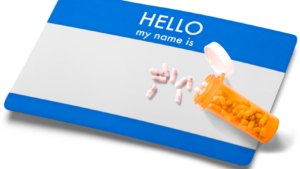 Businesses that market products of any kind to the general public are keenly aware that getting the right brand name can be a make-or-break step on the road to success. There’s the old story of one of the most famous marketing disasters in the automotive industry – the Ford Edsel. Until the mid-fifties, Ford was one of the “big three” brands in the largest market in the world. Ford’s brands included Lincoln Continental, Mercury Montclair, and Ford Thunderbird. Then, in 1958 following extensive marketing research – which was ignored – the company launched the Edsel, named after Henry Ford’s son. The rest is history – the greatest flop in US car market history!
Businesses that market products of any kind to the general public are keenly aware that getting the right brand name can be a make-or-break step on the road to success. There’s the old story of one of the most famous marketing disasters in the automotive industry – the Ford Edsel. Until the mid-fifties, Ford was one of the “big three” brands in the largest market in the world. Ford’s brands included Lincoln Continental, Mercury Montclair, and Ford Thunderbird. Then, in 1958 following extensive marketing research – which was ignored – the company launched the Edsel, named after Henry Ford’s son. The rest is history – the greatest flop in US car market history!
Other companies have done markedly better. Do you search the internet for something, or do you ‘google’ it? Does your baby wear a sleeping suit or a ‘onesie’? More to the point here, did you treat your headache with an ‘analgesic’, or did you take an ’aspirin’? (FYI: The grammatical term for this is anthimeria, describing the act of using a word in a new grammatical form.)
Pharmaceutics is different
While there are broad principles that companies in most industries adopt when they select the brand or product names for new entries onto the market, the pharmaceutical industry has to face some special challenges and hurdles. Many legislative and safety considerations have to be involved before a named drug can finally hit the shelves at your local pharmacy (or come to the attention of a prescribing doctor). It could even fundamentally affect whether or not the drug ever got to be approved by the authorities, since having a badly chosen or unintentionally deceptive name can kill the whole process in its tracks.
Different from all other major market sectors, drugs have more than one name, and there are rules to which each of the names has to conform. In this article, we’ll concentrate on US naming conventions. Still, it’s worth remembering that most drugs are sold in every market, and there are many different ruling bodies that each set their standards, so drug names will vary depending on where you are.
Scientific names
Regardless of country, all drugs have a common and agreed chemical name, based on the molecular structure of the drug, and it must be registered with the International Union of Pure and Applied Chemistry (IUPAC). For example, N-acetyl-p-aminophenol (better known to most people as Tylenol.)
Generic names
According to the American Medical Association Journal of Ethics, the second name is the generic (nonproprietary name), which is the international nonproprietary name – US Adopted Name (USAN) in the US or INNs in most other countries. The International Nonproprietary Name program is run by the World Health Organization. The FDA supports USAN and also recognizes the INN programs to ensure, as far as possible, that generic names are the same inside and outside the US. (Phentermine)
Primarily, the generic name is built on components of the chemicals in the drug, and here again, there are many guidelines and rules. Every generic drug is assigned to a drug class and will have a suffix that conforms to the USAN (or INN) rules. Generally, the suffix (the ‘tail’) of the generic drug is an indicator of the drug class.
For example, a very new wonder drug that is prescribed to treat a wide range of inflammatory conditions is built up from chimeric monoclonal antibodies, derived from both human and murine sources. All drugs built on this basis have the suffix ‘-ximab’, such as Remicade (generic name infliximab). Other examples of drug classes are ‘-zumba’, for the new drugs built on humanized antibodies, like Evenity (generic name romosozumab) for treating osteoporosis in menopausal women, and ‘-tinib’ built from Tyrosine-kinase inhibitors like Inlyta (generic name axitinib) which is prescribed as a first-line treatment for adults with renal cell carcinoma (RCC).
Two or more drugs combined into a single dosage form can simply be joined by hyphens or slashes. For example, the antibiotic suspension with the brand name Bactrim/Septra (generic name sulphamethoxazole/trimethoprim).
Branding the baby
The brand name is the ‘public’ name – what is printed on the packaging, advertising material, and instruction leaflets. Choosing this name may be closer to what anyone who has gone through choosing a name for a long-awaited baby will have experienced, with added complications. Brand names can have a strong influence on how well a new drug does when first introduced to the medical community and the general public.
From the doctor’s perspective, a name should have some intrinsic meaning that can’t be easily confused with a completely different drug simply because the two names are nearly the same. At the same time, some elements of the name should at least tangentially point to the drug’s main purpose. Doctors deal with hundreds of new drugs every year and don’t always have the time to search their notes or consult the drug specifications page to be sure they are about the write a prescription for the right one. If the name tells a meaningful story, then doctors are more likely to have it foremost in their memory and so to prescribe it.
This means the brand naming process begins by eliminating other drugs’ names that sound too similar. Consider a hypothetical scenario where a new antihistamine is going to be named “Allertin.” This name could potentially be confused with another well-known antihistamine called “Claritin.” The chances of this name being accepted by the FDA are minimal.
The names also cannot have any inbuilt promotional meaning (like ‘clearacny’ for acne medication, or ‘hardinit’ for an erectile dysfunction med.)
Most large drug companies either have a regular in-house procedure for name selection or contract out to established consultants who specialize in this function.
Party at the launch
It’s important to remember that 90% of new drugs fail to graduate from concept to launch. Only one-in-ten-thousand chemical compounds created in the laboratory make it all the way through, and on average, it costs about a billion dollars to get a drug to the point where doctors can prescribe it, and patients can pick it up from their pharmacy. On such a scale, it may seem that attaching a single word – the brand name – is a matter of trivial concern. But in fact, it can be one of the biggest factors that take the drug on through from the launch to acceptance in the minds of doctors and patients, so next time you open the box of a new prescription drug, give a bit of thought as to whether or not the process of naming has worked, in your opinion.
















